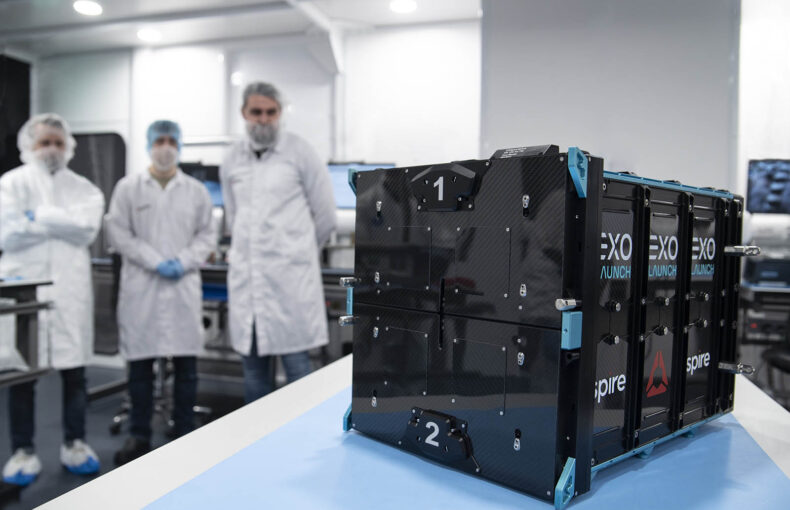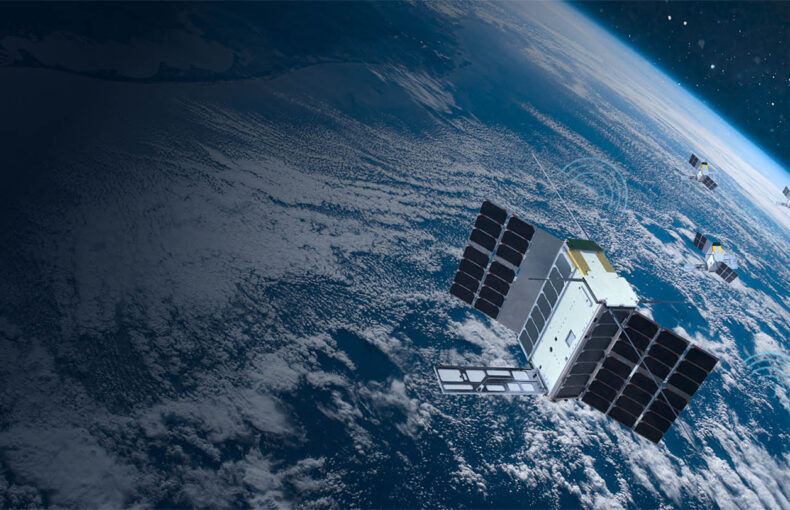Brain in Space – new satellite testbed on course to take Space Services to the next level
The ability to capture vast amounts of data from space is improving all the time but it raises one question – can we process it quickly enough to support effective decision-making in the commercial world?
Our own ground system is capable of processing terabytes of data; as our satellite constellation continues to grow and our datasets become increasingly large and complex, innovations in edge computing devices with embedded artificial intelligence (AI) and machine learning (ML) will allow more organisations to make sense of this information and apply it to the real-world challenges they face.
After having already launched multiple novel computing platforms suitable for AI processing, we’re now making further progress in this field, following the launch of our Brain in Space project at the end of 2020. With support from the ESA’s Earth Observation Science for Society Programme and in cooperation with Φ-lab, our team have created Brain in Space, an on-the-ground simulated testbed replicating Spire’s LEMUR 3U platform, the flagship of Spire’s global constellation of over 100+ satellites. It includes multiple new embedded edge AI/ML modules for users to schedule, upload and test their own AI/ML-powered applications and start to process more sensor data.
Within this simulated environment, we are able to test how well the AI/ML module can support the development of advanced AI-enabled analytics and edge computing in space. It marks a step-change in the way small satellite constellations are operated and managed – paving the way for satellites to perform time-critical missions and make decisions autonomously, without increasing bandwidth and other precious on-board resources. Spire has already launched satellites equipped with this capability to improve its sensors performance in some domains.
This is important given that the number of satellites in space has grown exponentially in the last decade and with them, the amount of data they generate and transmit. The sheer volume of data places considerable strain on the constellation’s infrastructure, potentially causing delays for the end-user.
The AI/ML module embedded in the satellite combines signal processing with a dedicated set of machine learning capabilities, enabling sensors to quickly detect and isolate patterns in large volumes of collected data, with no need for a human operator to intervene or manually process the data.
Smarter early warning systems

The ability to recognise patterns and spot anomalies is valuable in any sector but there are some where it is business critical, such as maritime industry or weather predictions.
Using the AI computing platforms to enhance data processing capabilities onboard small satellites would make it easier to i.e. detect illegal shipping activities, distress signals from planes and vessels or autonomously detect and assess the probability of a hurricane or tsunami, immediately tasking data collection from the right location and sensor, and initiating direct download to the ground to deliver the warning.
The big picture
By leveraging the major technological leaps in electronics miniaturisation, small satellite operators have drastically reduced the cost of space services while maintaining high quality performance. Space services providers have moved quickly in response to demand for commercially-viable Earth intelligence data, delivered through optical, radar, or any other sensors, with immediate applications across a range of sectors.
As we generate more and more data, corporations, governments and other organisations are becoming aware of the limits on their current processing capabilities. Analysis often falls to human operators and the scale of what is required means their staffing and IT resources cannot keep pace. In short, they struggle to create the systems and processes required to efficiently understand the flood of data relayed back to Earth and put it to use.
As we create ‘digital twins’ of our planet, advances in AI-assisted on-board processing of space sensor data mean we can offload the burden on ground stations and other infrastructure, and allocate more resources to the smart analysis of critical information. Satellites will autonomously prioritise what data is downloaded first to reduce latency, as well as direct sensors and provide actionable insights that far exceed current capabilities.
Brain in Space: The next frontier
The Brain in Space testbed is a major step in the development of AI-assisted processing of space sensor data and assessing the potential of using AI for on-board processing on a proven sensor platform. It also provides a test environment to trial different AI frameworks and algorithms for space applications to create new markets and products. And in the same way that Spire satellites are accessed remotely, so is Brain in Space, which is accessible from anywhere in the world, via modern APIs.
Learn more about the Brain in Space testbed:
Download the data sheetThe Brain in Space testbed has been now successfully set up in our facilities in Luxembourg and is available to our partners and customers who want to test innovative applications and payloads.
 Written by
Written by


